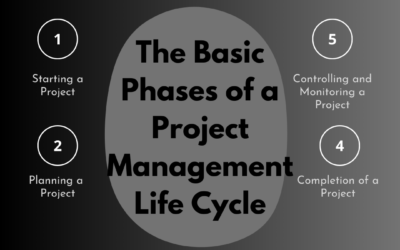
If your project scope management strategy adheres to a meticulous and precise approach, it may have a higher likelihood of success. To organise the scope of your next project, follow these steps.
Set the Project’s Parameters
You can plan how to stay under budget and work around any obstacles by defining the scope of a project before you begin. When defining the scope, take into account the project’s requirements, including those for money, time, expertise, materials, and any other crucial resources. Next, decide how much work the team should accomplish, the standard of the work to be done, and whether the resources at your disposal can satisfy those needs in the time allotted.
Establish a Scope Statement
A scope statement is typically clear, simple, and available to all project participants. Make a scope statement that includes the deliverables, assumptions, and restrictions after a general summary of the project’s main purpose. Along with any other information important to the project’s success, it might also include the fundamental principles driving the endeavour. The scope statement also aids the team in understanding any potential scope creep scenarios so they won’t be caught off guard if it happens.
Think About the Goals You Want to Accomplish
The project’s main motivation is its goal. An effective purpose helps guarantee the project’s success, whether your company intends to upgrade a product or roll out new corporate guidelines. You can set SMART goals as a roadmap to help you break your plan into manageable steps. The acronym SMART stands for specific, measurable, achievable, relevant, and time-based.
- Specific: Be as specific as you can when describing the project’s goals.
- Measurable: Keep your project’s goals quantifiable.
- Achievable: To assess how fast and easily the team can accomplish the project, use your available resources and your team’s skill sets as recommendations.
- Relevance: The project’s secondary goals should all be directly related to its primary goal.
- Time-Based: Give yourself enough time to complete your project.
Set the Project’s Requirements
Similar to the scope statement, being exceedingly explicit about the project’s requirements may help you get better results. For instance, the scope needs more details than “construct a warehouse” if the stakeholders require more storage for their goods. Include more details to help the production process, such as the location, size, layout, and rationale for building a new warehouse rather than renting one.
Lay out Your Strategy Plan
An outline with all the actions your team can take before completing the project might be helpful when building a project management plan. Include an objective, a list of deliverables, a timeframe, a plan for any changes to the project scope, and a method for leveraging the resources at your disposal to complete the project in your outline. Additionally, you can use this as a reference for upcoming projects, for any quality checks you might conduct afterwards, or as a written record for the client.
Determine Any Restrictions
Determine the project’s constraints, which usually consist of what scope creep violates. For instance, scope creep can cause a four-week deadline to be exceeded if a team member’s absence causes a two-week delay in the project. It’s critical to understand every project limitation so you can make appropriate plans in the event that scope creep becomes an issue. Select a person to be in charge of carefully monitoring the project’s constraints and determine what resources are available to mitigate such problems.
Put Together a Work Breakdown Structure
When distributing tasks, having a visual representation of the project’s components can be useful. A graphic representing a work breakdown structure is frequently a tree with boxes for deliveries. For instance, if the project involves moving the office to a new site, the deliverables can include a subgroup identifying all of the departments that are moving. The team can better understand the project’s overall goal and how each component fits together with the aid of this high-level type of graphic.
Clarify the Project Scope with the Team
Your team might find it useful to go over the project scope with you before starting. This gives you the chance to hear recommendations, respond to inquiries, and make sure everyone involved in the project is happy with the plan you’ve developed. Before allocating each team member to a particular project component, carefully review the constraints, available resources, and any other details. To ensure consistency and clarity, you might go over the project scope with the customer before you begin.




